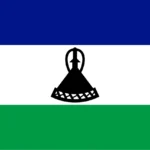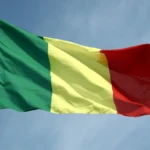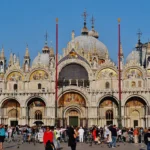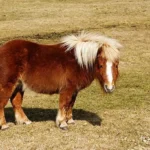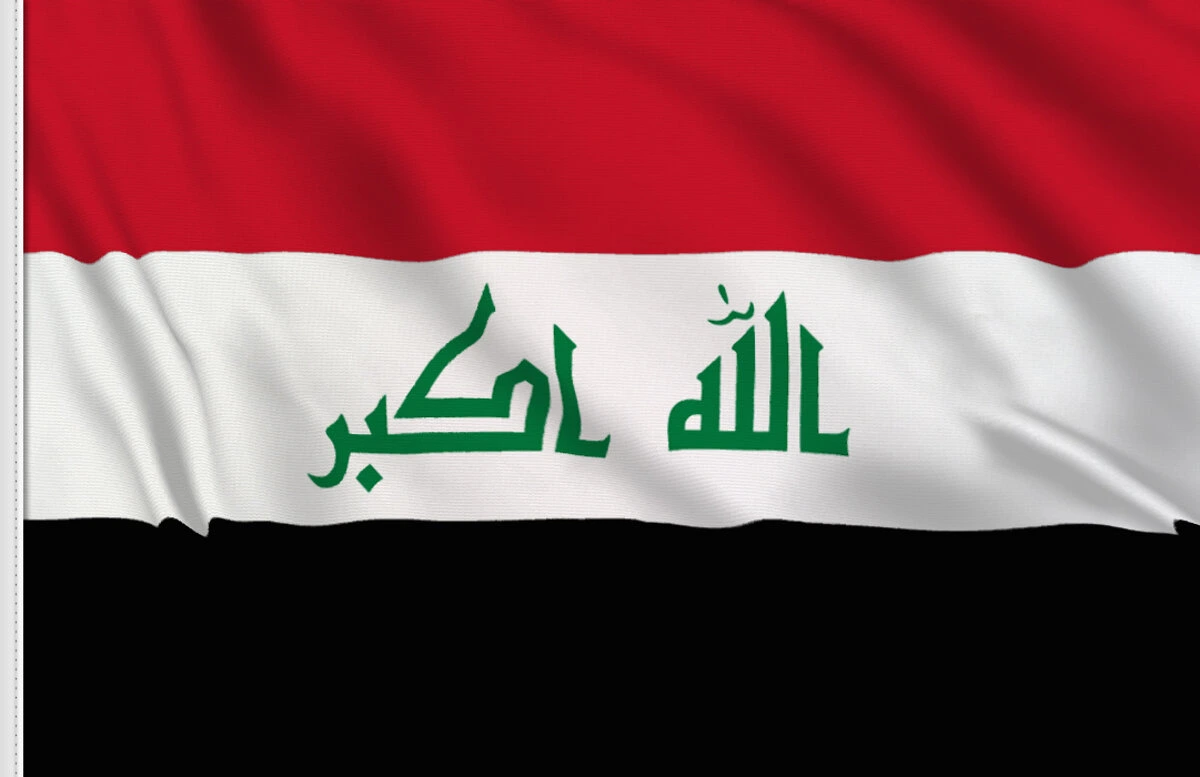
Iraq, a country steeped in history and cultural richness, is often recognized as the birthplace of civilization. From the ancient cities of Mesopotamia to its vibrant contemporary society, Iraq boasts a tapestry of stories that reflect the resilience and diversity of its people. While many may associate Iraq with its modern challenges, the nation is also home to a wealth of fascinating facts that highlight its artistic heritage, sporting triumphs, and breathtaking landscapes. In this blog, we invite you to explore 25 interesting facts about Iraq that reveal the depth of its heritage, the spirit of its people, and the beauty of its land. Whether you’re a history enthusiast, a culture lover, or simply curious about this remarkable nation, these insights will provide a deeper understanding of Iraq’s significance on the world stage. Join us as we journey through the past and present of this captivating country!
Capital: Baghdad, the capital city of Iraq, is one of the largest cities in the Arab world and serves as the political, cultural, and economic center of the country. Founded in the 8th century during the Abbasid Caliphate, Baghdad was known for its flourishing intellectual and cultural life, particularly during the Islamic Golden Age. The city is characterized by its rich history, diverse population, and significant landmarks, including the historic Al-Mustansiriya University and the iconic Al-Rashid Street.
Population: As of 2021, Iraq’s estimated population is around 40 million people. This population is diverse, consisting of various ethnic and religious groups, including Arabs, Kurds, Turkmen, and Assyrians. The population density varies across the country, with urban areas like Baghdad being highly populated while rural areas may have fewer residents. The demographic landscape has been shaped by historical events, conflicts, and migration patterns, influencing the social and cultural dynamics within Iraq.
Area: Iraq covers an area of approximately 438,317 square kilometers (169,234 square miles), making it the 58th largest country in the world. The geography of Iraq is diverse, featuring deserts, mountains, and fertile plains, particularly in the regions around the Tigris and Euphrates rivers. This geographical diversity has played a crucial role in the development of agriculture and civilization in the region, as the river valleys provided fertile soil and water resources for early settlements.
Official Language: The official languages of Iraq are Arabic and Kurdish. Arabic is widely spoken and is the language of government, media, and education. Kurdish, primarily spoken in the northern regions of Iraq, is recognized as an official language alongside Arabic in the Kurdistan Region. The linguistic diversity reflects the country’s ethnic composition and cultural heritage, with various dialects and languages also present among minority communities.
Currency: The currency used in Iraq is the Iraqi dinar (IQD). The dinar was first introduced in 1932, replacing the Indian rupee at par. Over the years, the currency has undergone several changes, particularly following periods of economic instability and inflation. The dinar is subdivided into 1,000 fils, although fils are no longer in common use. The value of the dinar is influenced by Iraq’s oil-dependent economy and has seen fluctuations due to various economic and political factors.
Geography: Iraq is bordered by Turkey to the north, Iran to the east, Kuwait to the southeast, Saudi Arabia to the south, Jordan to the southwest, and Syria to the west. This strategic location has made Iraq a crossroads of various cultures and civilizations throughout history. The country features a mix of landscapes, including the mountainous regions in the north, the fertile plains of Mesopotamia, and the vast deserts in the west and south. The Tigris and Euphrates rivers, which flow through Iraq, have historically supported agriculture and trade.
Rivers: The Tigris and Euphrates rivers are the two major rivers flowing through Iraq, both of which are vital for the country’s agriculture and water supply. The Tigris, which flows through Baghdad, is approximately 1,850 kilometers (1,150 miles) long, while the Euphrates is about 2,800 kilometers (1,740 miles) long. These rivers have been crucial to the development of Mesopotamian civilization, providing water for irrigation and serving as transportation routes. The rivers also hold cultural significance, featuring prominently in Iraqi literature and history.
Ancient Civilizations: Iraq is home to some of the world’s earliest civilizations, including Sumer, Akkad, Babylon, and Assyria. These ancient cultures contributed significantly to human history, developing writing systems, legal codes, and architectural innovations. The Sumerians, for instance, are credited with creating one of the first writing systems, cuneiform, around 3100 BCE. The ruins of these ancient cities, such as Babylon and Ur, continue to be studied and admired for their historical significance and contributions to art, science, and governance.
UNESCO Sites: Iraq has several UNESCO World Heritage Sites, including the ruins of Babylon and the ancient city of Samarra. Babylon, once a major city of ancient Mesopotamia, is renowned for its impressive structures, such as the Ishtar Gate and the Hanging Gardens, which are considered one of the Seven Wonders of the Ancient World. Samarra is famous for its Great Mosque and the spiral minaret known as the Malwiya Tower. These sites reflect the rich cultural heritage of Iraq and its historical importance as a center of civilization.
Religion: The predominant religion in Iraq is Islam, with the majority being Shia Muslims, followed by Sunni Muslims. Islam was introduced to the region in the 7th century, and since then, it has played a central role in shaping Iraq’s culture, laws, and social norms. The religious landscape is complex, with significant historical and theological differences between Sunni and Shia communities. The Shia majority primarily resides in the southern regions of Iraq, while Sunni populations are more concentrated in the western and northern areas. Iraq is also home to various religious minorities, including Christians, Yazidis, and Mandaeans, each contributing to the country’s rich tapestry of cultural and religious diversity. The historical context of sectarian tensions has influenced Iraq’s modern political landscape, particularly following the 2003 invasion and subsequent conflicts.
Ethnic Groups: The main ethnic groups in Iraq include Arabs, Kurds, Turkmen, and Assyrians. Arabs make up the majority of the population, primarily residing in central and southern Iraq. The Kurdish population, primarily located in the northern region known as the Kurdistan Region, has its own distinct language and culture, and has sought greater autonomy over the years. Turkmen, who primarily speak Turkish, are found in northern Iraq and have a rich cultural heritage. Assyrians, an ancient ethnic group with roots in Mesopotamia, are predominantly Christian and have faced significant challenges in recent years due to conflict and displacement. This ethnic diversity contributes to Iraq’s complex social fabric and has influenced its political dynamics.
History: Iraq was known as Mesopotamia, often referred to as the “cradle of civilization.” This region is recognized as one of the earliest sites of human settlement and urbanization, dating back to around 10,000 BCE. Mesopotamia is credited with numerous innovations, including the invention of writing, the wheel, and early forms of governance. The fertile land between the Tigris and Euphrates rivers allowed for the development of agriculture, leading to the rise of city-states such as Uruk and Babylon. The historical significance of Mesopotamia continues to be a focal point for archaeologists and historians studying the foundations of human civilization.
Independence: Iraq gained independence from British mandate rule on October 3, 1932. Following World War I, Iraq was placed under British administration, which led to a nationalist movement advocating for self-governance. The 1920 Iraqi Revolt against British rule highlighted the desire for independence. After a series of political changes, Iraq became a kingdom and later a republic in 1958. Independence marked the beginning of Iraq’s journey to establish its identity and sovereignty, although subsequent decades were marked by political turmoil, conflicts, and changes in governance.
Oil Reserves: Iraq has one of the largest proven oil reserves in the world, estimated at about 145 billion barrels. The discovery of oil in the early 20th century transformed Iraq’s economy and positioned it as a key player in the global oil market. Oil exports account for a significant portion of government revenue, and the country’s economy is heavily reliant on this resource. The management and distribution of oil wealth have been central to Iraq’s political landscape, influencing both domestic policies and international relations, particularly with neighboring countries and global powers.
Economy: The economy of Iraq is heavily dependent on oil exports, which account for approximately 90% of government revenue. This reliance on oil has made the economy vulnerable to fluctuations in global oil prices. While Iraq has other natural resources, such as natural gas and minerals, the oil sector dominates economic activity. Efforts to diversify the economy have been challenged by political instability, security concerns, and infrastructural deficits. The post-2003 era has seen attempts at economic reform and reconstruction, but challenges remain in achieving sustainable growth and development.
Climate: Iraq has a predominantly arid climate, characterized by hot summers and mild winters. The summer months can see temperatures soar above 40 degrees Celsius (104 degrees Fahrenheit), particularly in the southern and central regions. Rainfall is scarce, with most precipitation occurring between November and April. The climate influences agricultural practices, water resource management, and overall living conditions. In recent years, Iraq has faced challenges related to climate change, including water scarcity and desertification, which have significant implications for agriculture and livelihoods.
Education: Iraq has a literacy rate of approximately 79% as of recent estimates. The education system has undergone significant changes over the years, particularly following decades of conflict and instability. Historically, Iraq had a relatively strong education system, with a focus on science and technology. However, the challenges of war, displacement, and economic difficulties have affected access to education and quality of schooling. Efforts are being made to rebuild and reform the education sector, emphasizing the importance of education for national development and social cohesion.
Cuisine: Traditional Iraqi cuisine includes dishes like kebabs, dolma, and baklava. Iraqi food is known for its rich flavors and use of spices, reflecting the country’s diverse cultural influences. Kebabs, made from marinated meat grilled on skewers, are a popular street food. Dolma, a dish of stuffed vegetables, is often served during special occasions and family gatherings. Desserts like baklava, made from layers of filo pastry, nuts, and honey, are enjoyed during celebrations. Iraqi cuisine showcases the country’s agricultural products and culinary traditions, with meals often being a communal experience.
Arts: Iraq boasts a profound literary heritage, particularly in poetry, with one of its most celebrated poets being Al-Mutanabbi, who lived in the 10th century. His works are renowned for their depth, eloquence, and mastery of the Arabic language, influencing generations of poets and writers throughout the Arab world. The tradition of storytelling and poetry in Iraq is deeply rooted in its history, reflecting the complexities of human experience, societal issues, and the beauty of the Arabic language. This rich literary tradition continues to thrive, with contemporary poets and writers drawing inspiration from their historical predecessors while addressing modern themes.
Sports: Football (soccer) holds a special place in the hearts of many Iraqis, serving as a unifying force in a country marked by diversity and challenges. The national football team achieved a significant milestone by winning the AFC Asian Cup in 2007, a victory that ignited national pride and joy amid a backdrop of political instability. The triumph was celebrated across the nation and is remembered as a pivotal moment in Iraq’s sports history, showcasing the talent and resilience of Iraqi athletes. Football matches often serve as a source of hope and community, bringing people together regardless of their backgrounds.
National Flag: The current flag of Iraq, adopted in 2008, features three horizontal stripes of red, white, and black, which are traditional Pan-Arab colors. In the center, the Takbīr, which translates to “God is the Greatest” in Arabic, is inscribed in green. This flag symbolizes Iraq’s identity, historical struggles, and aspirations for unity and strength. The colors represent the Arab heritage and the country’s connection to the broader Arab world. The flag serves as a powerful emblem of national pride, particularly during international sports events and national celebrations.
Mountains: The Zagros mountain range runs along the northeastern border of Iraq, stretching from the northwest of Iran down to the southern part of Iraq. This mountain range is characterized by its rugged terrain and stunning landscapes, playing a crucial role in the geography and ecology of the region. The Zagros mountains are not only significant for their natural beauty but also for their biodiversity, housing various flora and fauna. Additionally, they have historical importance, as they have been home to numerous civilizations throughout history, influencing the culture and lifestyle of the communities living in their shadows.
Healthcare: Iraq’s healthcare system has faced substantial challenges, particularly following years of conflict and instability. The prolonged violence has severely impacted healthcare infrastructure, leading to shortages of medical supplies, personnel, and facilities. Despite efforts to rebuild and improve healthcare services, many citizens still struggle to access quality care. The government and international organizations continue to work towards addressing these issues, but significant gaps remain, particularly in rural areas. The healthcare challenges in Iraq highlight the ongoing need for investment and reform to ensure the well-being of its population.
Cultural Heritage: Iraq’s cultural heritage is a tapestry woven from the influences of various civilizations, including Persian, Ottoman, and Arab cultures. This rich history is reflected in its architecture, art, music, and traditions, making Iraq a cradle of civilization. The country is home to numerous archaeological sites, including the ancient cities of Babylon and Ur, which provide insight into its historical significance. The blending of diverse cultural influences has shaped Iraq’s identity, fostering a unique cultural landscape that continues to evolve while honoring its historical roots.
Modern Challenges: In recent years, Iraq has faced a multitude of modern challenges, including political instability, security concerns, and economic difficulties. The aftermath of conflicts has left the country grappling with governance issues, corruption, and the need for effective public services. Security threats from various groups have further complicated efforts to achieve stability and development. Additionally, the economy has been impacted by fluctuations in oil prices, which are a significant source of revenue for the country. Addressing these challenges requires comprehensive strategies and collaboration among various stakeholders to foster a more stable and prosperous future for Iraq.
Iraq FAQs
Iraq, officially the Republic of Iraq, is a country in Western Asia, historically known as Mesopotamia. It’s a land of ancient civilizations, diverse cultures, and complex modern history. Here are some frequently asked questions about Iraq, answered in detail:
1. Where is Iraq located?
Iraq is located in the Middle East, bordered by Turkey to the north, Iran to the east, Kuwait to the southeast, Saudi Arabia to the south, Jordan to the southwest, and Syria to the west. It has a small coastline on the Persian Gulf.
2. What is the history of Iraq?
Iraq’s history stretches back to some of the earliest civilizations, including Sumer, Akkad, Assyria, and Babylonia. It’s considered the “cradle of civilization” due to the significant advancements in agriculture, writing, law, and mathematics that originated in Mesopotamia. Throughout its history, Iraq has been part of various empires and caliphates, including the Abbasid Caliphate. In the 20th century, Iraq became an independent nation after the collapse of the Ottoman Empire. Its modern history has been marked by periods of political instability, conflict, and war, including the Iran-Iraq War and the Iraq War.
3. What is the population of Iraq?
Iraq’s population is estimated to be over 40 million. It is a diverse country with various ethnic and religious groups.
4. What languages are spoken in Iraq?
The official languages of Iraq are Arabic and Kurdish. Other minority languages are also spoken, including Turkmen and Syriac.
5. What is the religion in Iraq?
Islam is the dominant religion in Iraq, with a majority of Shia Muslims and a significant Sunni Muslim population. There are also smaller religious minorities, including Christians, Yazidis, and others.
6. What is the political system in Iraq?
Iraq is a parliamentary republic. The President is the head of state, and the Prime Minister is the head of government. The Council of Representatives is the parliament. Iraq’s political system has been evolving since the overthrow of Saddam Hussein in 2003.
7. What is the economy of Iraq like?
Iraq’s economy is heavily reliant on oil exports. The country has vast oil reserves, but the economy has been impacted by years of conflict and instability. Rebuilding infrastructure and diversifying the economy are major challenges for Iraq.
8. What are some of the major cities in Iraq?
Baghdad is the capital and largest city of Iraq. Other major cities include Mosul, Basra, Erbil, and Sulaymaniyah.
9. What is the culture like in Iraq?
Iraq has a rich and diverse culture, influenced by its long history and various ethnic and religious groups. Traditional arts, music, literature, and cuisine are important aspects of Iraqi culture. However, years of conflict and displacement have impacted cultural heritage and traditions.
10. What are some of the challenges facing Iraq?
Iraq faces numerous challenges, including:
- Political instability: The country continues to grapple with political divisions and conflicts.
- Security concerns: Terrorism and violence remain a threat in some parts of Iraq.
- Economic development: Rebuilding the economy and creating jobs are crucial for Iraq’s future.
- Social issues: Addressing issues such as poverty, displacement, and sectarian tensions is essential for social cohesion.
- Environmental issues: Iraq faces environmental challenges such as water scarcity and desertification.
11. Is it safe to travel to Iraq?
Travel to Iraq can be dangerous, and the security situation varies depending on the region. It’s essential to research thoroughly and consult travel advisories before considering travel to Iraq. Certain regions may be more stable than others, but caution is advised throughout the country.
12. What are some of the historical sites in Iraq?
Iraq is home to numerous important historical sites, including:
- Mesopotamian ruins: Sites such as Ur, Uruk, and Babylon offer glimpses into ancient civilizations.
- Islamic shrines and mosques: Iraq is home to significant religious sites for both Shia and Sunni Muslims.
- Citadel of Erbil: A UNESCO World Heritage Site, this ancient citadel is located in the Kurdistan Region of Iraq.
13. What is the Kurdistan Region of Iraq?
The Kurdistan Region is an autonomous region in northern Iraq, inhabited predominantly by Kurds. It has its own government and Peshmerga (military forces). The relationship between the Kurdistan Region and the central government in Baghdad is complex and has been marked by periods of tension and cooperation.
14. What is the climate like in Iraq?
Iraq has a predominantly desert climate, characterized by hot, dry summers and cool, wet winters. Temperatures can reach extreme highs in the summer.
15. What is the currency of Iraq?
The currency of Iraq is the Iraqi Dinar (IQD).
